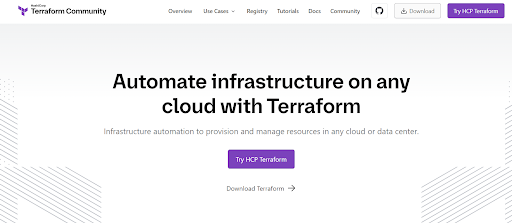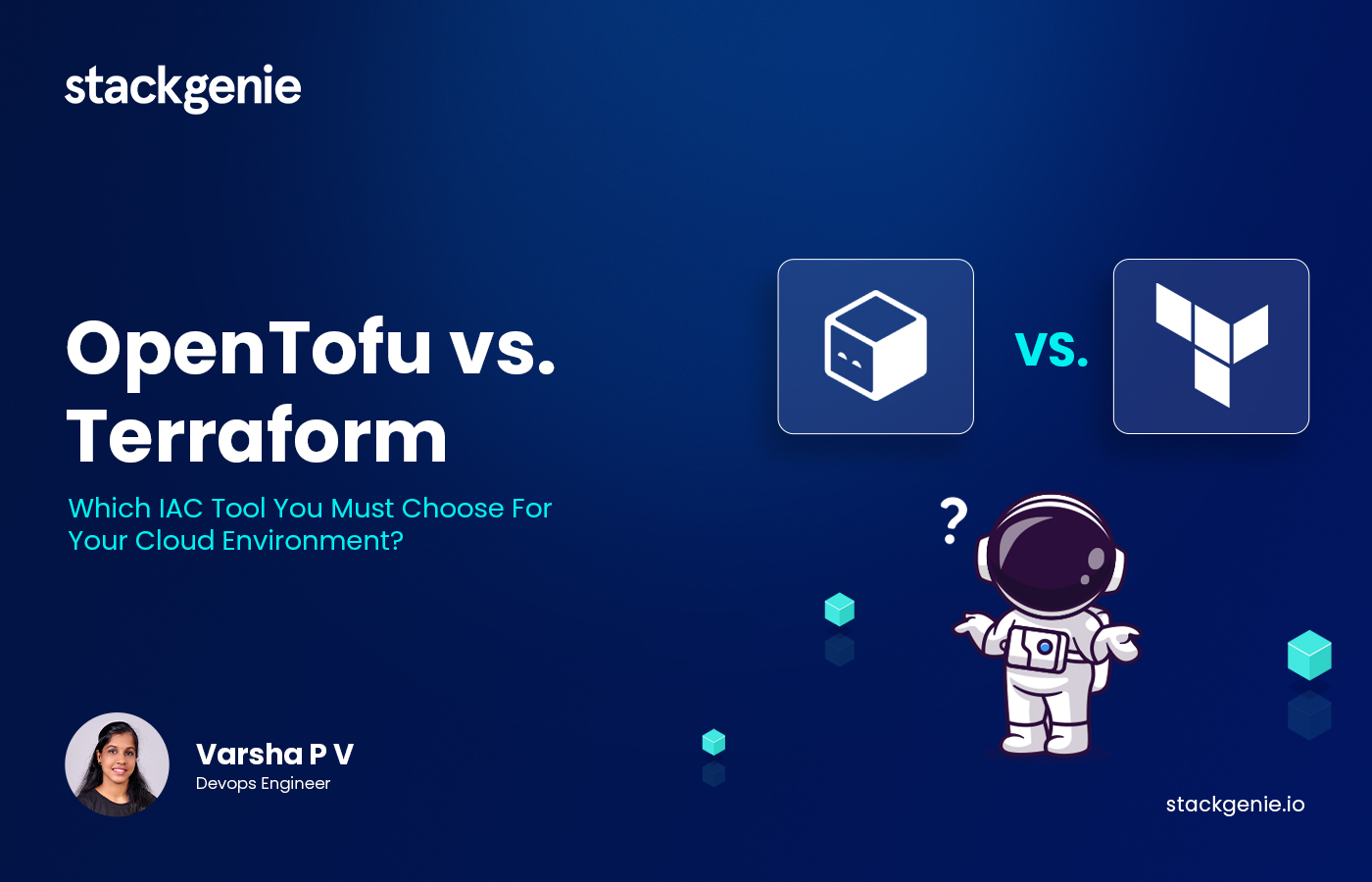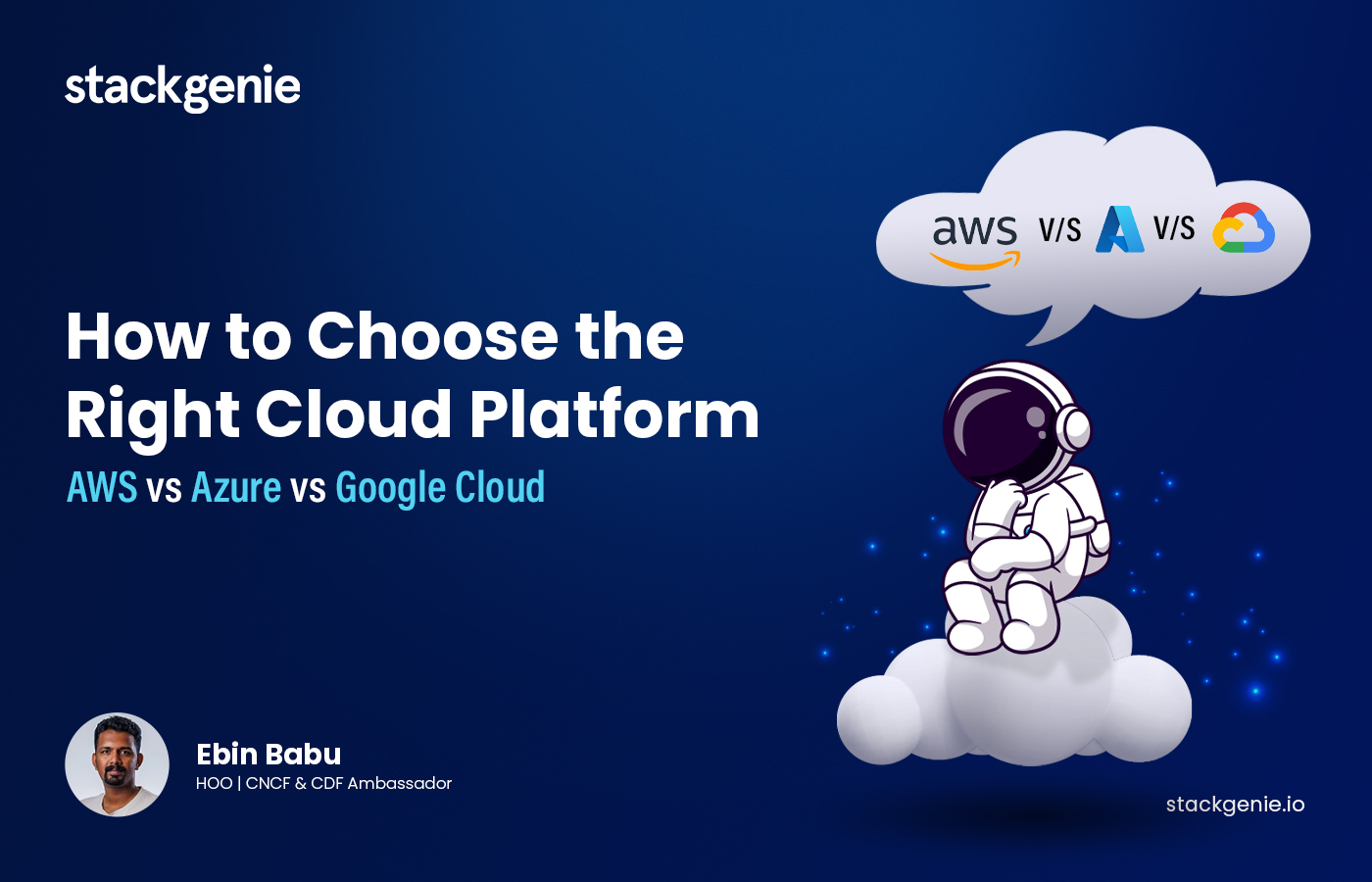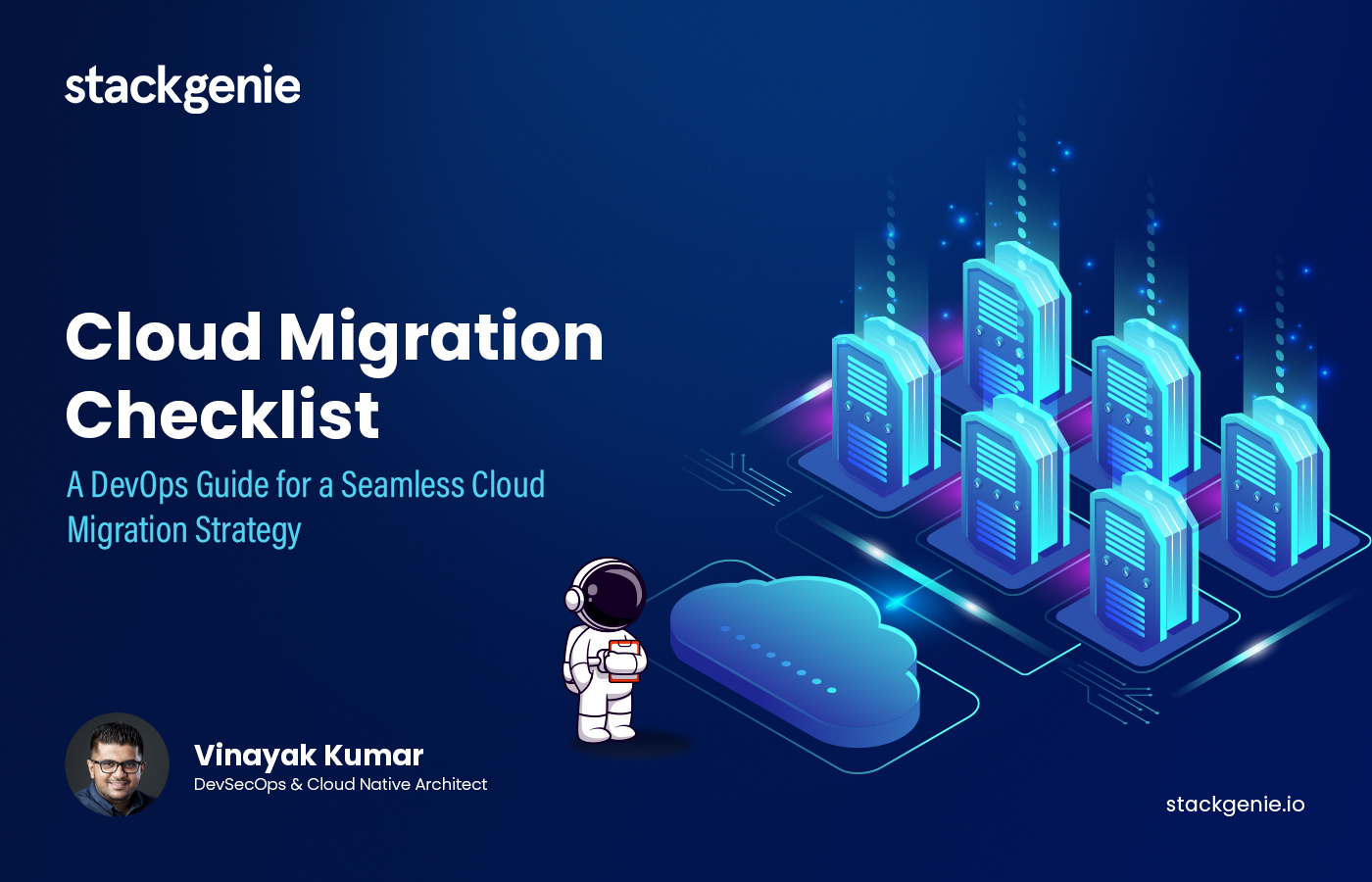OpenTofu vs Terraform- Which IAC Tool You Must Choose For Your Cloud Environment?
In the field of Infrastructure as Code (IAC), selecting the right tool is crucial for efficient cloud and on-prem business resource management. OpenTofu and Terraform are the two popular IAC choices designed to automate infrastructure provisioning and management based on codes.
However, despite their similar functionalities, they differ in areas such as development origin, community support, and performance characteristics. It is essential for enterprises to understand the most obvious differences between these two tools, such as security, reliability, and scalability, to make an informed decision that aligns with their specific infrastructure needs.
In this article, we’ll explore the strengths and challenges of both OpenTofu and Terraform, providing insights to help you choose the right IAC solution for your organization’s cloud environment.
So. let’s get started.
What is Terraform?

Infrastructure as Code (IAC) automates the management of cloud and on-prem resources using code instead of manual setup. Tools like Terraform allow businesses to define, configure, and manage infrastructure through reusable configuration files, ensuring consistency, scalability, and efficiency while integrating with various cloud providers and services.
By adopting IAC, businesses can improve operational efficiency, reduce human error, and ensure their infrastructure evolves in a controlled, repeatable manner.
Key Features
Several key points empower Terraform as the most-favored IaC tool:
1. Enterprise Support
Terraform’s Enterprise Edition includes features like audit logging, policy enforcement, and remote state management, catering to large organizations with complex governance needs. Trusted by over 24,000 customers, its robust features and stability make it the top choice for enterprises over alternatives like OpenTofu.
2. Multi-cloud Deployment
It is usually wise to keep a hybrid business model with physical resources and a cloud server that hosts your business, allowing you to maintain your application consistency by deploying it on multiple servers. This strategy reduces the risk of a failed cloud service provider in a particular region while maintaining continuous performance control over your business.
3. Customization and Extensibility
Terraform supports many providers and modules, allowing users to customize their infrastructure according to specific needs. However, this comes with a steep learning curve due to its broad capabilities, including advanced features like private module registries and robust policy management.
What is OpenTofu?

OpenTofu is a version of Terraform created after Terraform changed its licensing from the open-source Mozilla Public License (MPL) to the more business-oriented Business Source License (BSL).
This shift led to OpenTofu, which continues to be fully open-source and is backed by the Linux Foundation. OpenTofu retains Terraform’s core functionalities but operates under a more permissive open-source license, offering greater flexibility for developers and businesses who prefer an entirely open model.
While Terraform’s BSL restricts certain uses, OpenTofu aims to provide a free, open alternative that fosters community collaboration and innovation.
Key Features
OpenTofu has many features that originate from Terraform. However, some features overlap the Terraform offerings:
1. Community-Driven Development
OpenTofu is a community-driven project backed by the Linux Foundation, created in response to Terraform’s licensing shift from MPL to BSL. It maintains open-source availability with fewer restrictions, focusing on community input, collaboration, and innovation, allowing developers to contribute confidently to its growth.
2. Backward Compatibility
One of OpenTofu’s key advantages is that it is backward compatible with Terraform. This means that OpenTofu can work with Terraform configuration files, modules, and workflows without requiring significant modifications, making it easier for teams to migrate or use both tools in parallel.
3. Client-Side State Encryption
OpenTofu lets its customers encrypt the state file locally (on the client’s machine) before it is stored or shared. This practice ensures that the APIs, passwords, or resource configurations are safe and can only be decrypted by the person who is the owner of the state file, allowing them to update their infrastructure.
Terraform vs. OpenTofu – The Comparison
Let’s understand the key differences between Terraform and OpenTofu. It will help you align your business requirements with the best practices these two IAC tools offer.
1. Performance and Ecosystem
OpenTofu vs. Terraform: Which IaC infrastructure development tool is better performance-wise? This question arises because OpenTofu is a direct alternative to Terraform and has all the functionalities when compared with another.
However, depending on the community and maturity of the software tools, we can say that Terraform surpasses OpenTofu because it is built on the foundation of the latter. Moreover, OpenTofu is still a basic IaC tool that can be a good start for beginners in building their business infrastructure.
It lacks many robust features and resources supported by Terraform, such as access to remote operating systems, audit logging, policy as code, and potentially faster development cycles.
2. State Encryption and Management
OpenTofu provides a unique feature of client-side state encryption, which ensures that sensitive data stored in the state file is encrypted locally. This adds an extra layer of security for those concerned about data privacy.
However, Terraform offers remote state management (Example: via AWS S3) with built-in encryption options for securing state files in transit and at rest. Terraform’s state management is more robust in enterprise settings, supporting features like state locking and automated backups, which help prevent data corruption during concurrent updates.
3. License Support
OpenTofu uses the Mozilla Public License 2.0 (MPL 2.0), a permissive open-source license that encourages collaboration and modification without the restrictions of a commercial license. This makes OpenTofu a good option for organizations that prefer fully open-source tools with fewer commercial restrictions.
Terraform switched to the Business Source License (BSL 2.x), restricting its use in commercial settings. This raised concerns in the open-source community about control over business models, leading to the creation of OpenTofu as an alternative, ensuring the tool remains fully open-source and unrestricted.
4. Maturity and Commercial Support
Terraform supports its customers with more vibrant features and cloud optimization control services. Moreover, it offers advanced features for larger organizations, including self-hosted solutions, enhanced security (e.g., private module registries, policy enforcement via Sentinel), and audit logging.
Terraform offers enhanced integrations with other HashiCorp enterprise products (like Vault for secrets management) and enterprise tools. OpenTofu does not officially offer commercial support as part of its core offering.
A Table Explaining Key Differences: OpenTofu vs. Terraform
This table highlights the major features, use cases, and limitations of both Terraform and OpenTofu, helping you choose the right tool depending on your needs. Here’s a refined table that consolidates all the pointers, removes redundancy, and presents a clear comparison between Terraform and OpenTofu:
| Feature | Terraform | OpenTofu |
|---|---|---|
| License Support | BSL 1.1 (Source-available, restricted production use) | MPL 2.0 (Open-source) |
| License Type | Source-available, restricted production use | Open-source |
| Language Support | HashiCorp Configuration Language (HCL) | HashiCorp Configuration Language (HCL) |
| State Encryption | Yes | Yes |
| Early Variable Evaluation | No | Yes |
| Provider Support | Support across multiple IaaS, SaaS, and PaaS providers | Support across multiple IaaS, SaaS, and PaaS providers |
| Testing | Yes, it is native and integrates with third-party testing tools | Yes, it is native and integrates with third-party testing tools |
| Third-party CI/CD Tools Support | Yes | Yes |
| Policy as Code | Yes, supports in-built Sentinel or OPA for policy enforcement | Supports third-party policy as code tools like Checkov, Kyverno, etc. |
| Secrets Management | Third-party tools like Vault are required | Third-party tools can be used |
| Audit Capabilities | Limited, available with HashiCorp enterprise support | No |
| Governance | HashiCorp-controlled | Community-driven, non-profit foundation |
| Commercial Support | Official technical support with SLAs from HashiCorp | No official paid support; community support only |
However, it highly depends on how professional and complex your business model is because it directly impacts the IaC tool that you must implement for your enterprise functioning.
Migration – OpenTofu to Terraform
Here’s what you need to know when migrating your digital business model’s infrastructure from OpenTofu to Terraform. However, deciding your initial state of the IAC tool benefits entrepreneurs for smooth online platform configuration without losing the initial organizational state that holds your conventional model.
Check the Current OpenTofu Code
- Objective:Ensure that the code you’re using with OpenTofu matches the actual state of your infrastructure (servers, databases, etc.).
- Action:Run the command : tofu init
- Why This Matters: This command sets up OpenTofu to connect to your infrastructure. It ensures that OpenTofu is properly prepared to manage your resources.
Verify No Drifts in Resources (with OpenTofu)
- Objective: Confirm that your OpenTofu code and your real infrastructure are fully aligned with no discrepancies (or “drifts”).
- Action: Run the command: tofu apply
- Why This Matters: This checks that OpenTofu’s view of your infrastructure matches reality. If everything is in sync, the system will confirm there are no changes needed.
Switch Back to Terraform
- Objective: Transition back to using Terraform, the primary tool for managing your infrastructure.
- Action: Run the command: terraform init
- Why This Matters: This sets up Terraform and ensures it has all the necessary tools and configurations to interact with your infrastructure, just like OpenTofu did.
Validate No Drifts with Terraform
- Objective: Make sure that Terraform’s view of your infrastructure matches what’s actually deployed and is consistent with the changes managed by OpenTofu.
- Action: Run the command: terraform apply
- Why This Matters: This command checks for any discrepancies between Terraform’s code and the actual resources. If everything is in order, Terraform will report that no changes are necessary. If there are any differences, it will propose the required updates.
The main difference when moving back to Terraform is ensuring that Terraform uses the state and provider configurations that were previously used in OpenTofu. If you have been using OpenTofu’s state file, you may need to import that into Terraform if it was not automatically shared.
With this approach, you can confidently switch between OpenTofu and Terraform while maintaining consistent infrastructure throughout the transition process.
Ending The Dilemma: Which Open Source IaC Tool You Must Choose?
Ultimately, the choice between Terraform and OpenTofu depends on your specific organizational needs. For enterprises requiring advanced features, robust security, and enterprise-grade support, Terraform remains a strong choice.
However, for organizations prioritizing open-source principles and community-driven development, OpenTofu offers a compelling alternative.
Create an Impactful Cloud Environment Using Stackgenie’s Terraform Deployment Services
Tired of manual infrastructure management? Let Stackgenie’s expert team automate your cloud deployments with Terraform. Our comprehensive services include:
- Infrastructure as Code (IaC) implementation
- Terraform module development
- Security and compliance best practices
- Continuous integration and delivery (CI/CD) pipelines
Experience the power of automated infrastructure. Contact Stackgenie today to streamline your cloud operations and achieve greater efficiency.
FAQs
1. Why must you migrate from OpenTofu to Terraform?
Terraform provides official support(Hashicorp) and a stable business environment with regular updates and features so that its users feel no dependency upon an open-source IaC tool like OpenTofu with an unstable support mechanism.
While OpenTofu is a promising option, Terraform’s maturity, community support, and vendor partnerships often make it a more attractive choice for organizations seeking a robust and reliable infrastructure-as-code solution.
2. OpenTofu and Terraform: same but different!
OpenTofu, a fork of Terraform 1.6.x, shares similarities with Terraform, including infrastructure deployment and management using the desired state model. Both use HashiCorp Configuration Language (HCL) and support various cloud providers like AWS, Azure, and Google Cloud.
3. What is the OpenTofu MPL license?
The MPL 2.0 License applied to OpenTofu allows users to freely use, modify, and distribute the software, with the requirement that any modified files are made available under the same license. It permits combining OpenTofu with proprietary code as long as changes to OpenTofu itself are shared. It also includes a patent grant and ensures source code availability.
4. What is a Terraform BSL license?
The Terraform BSL (Business Source License) is a source-available license used by HashiCorp for Terraform. It allows users to view and modify the code but restricts its commercial use for a period (usually 4 years).
After this period, the software becomes fully open-source. The BSL aims to protect HashiCorp’s commercial interests while allowing community contributions and usage.
5. Why can migrating from OpenTofu to Terraform prove beneficial for your cloud business?
Migrating from OpenTofu to Terraform offers benefits like industry-wide adoption, broad cloud provider support, a mature ecosystem, and robust security features. Terraform’s scalability, multi-cloud capabilities, and large community ensure long-term stability, flexibility, and operational efficiency for your cloud business.


